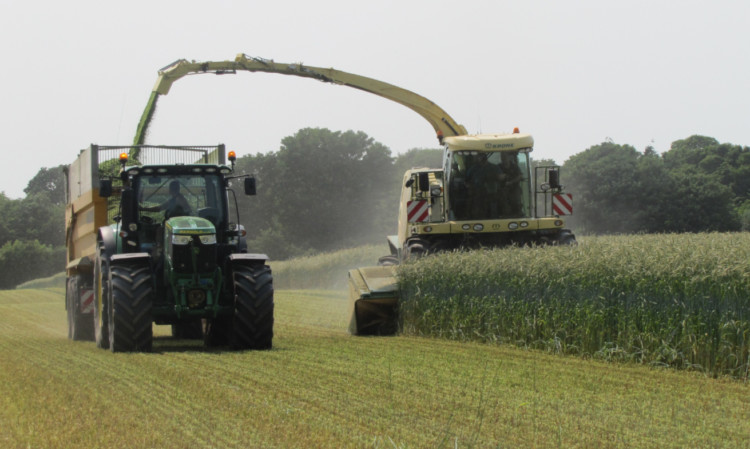New crops suitable for Scottish conditions are few and far between, but Simon Witheford, of seeds company KWS, believes hybrid rye will fit the bill.
The recent surge in interest in the crop came initially from biogas producers but, as Mr Witheford explained to a meeting of agronomists at Markinch, it could also be a very suitable forage crop.
Sown in mid-September and treated very similarly to any other winter cereal crop, it is ready for cutting as wholecrop in mid-July under Scottish conditions or a fortnight earlier in the south.
KWS’s most recent variety, Magnifico, has been producing total biomass yields of between 14 and 16 tonnes per hectare slightly ahead of the company’s other hybrid rye, Progas.
“It needs a good seed rate for best results. The crop is incredibly vigorous and grows very tall, hence the huge yield of biomass. Some growers have used two growth regulator sprays, but others think one will be enough to keep it on its feet,” he said.
The crop would normally be harvested by a forage harvester and immediately ensiled either in a clamp or an ag-bag system.
For biogas production, the chop length is better to be as short as possible, whereas livestock producers would look for a longer fibre length.
Mr Witheford said he was aware of at least two biogas projects either under construction or in the late planning phase in Scotland, and he was sure there would be more in coming years.
Essentially these plants required easily digestible material and the same trait was very desirable for feeding cattle or sheep.
Research had shown that the digestibility value (D value) of wholecrop hybrid rye was better than either wholecrop wheat or triticale.
Optimum applied nitrogen levels appeared to be between 120kg and 160kg per hectare, with growing costs slightly higher than winter barley.
Fewer fungicides were required but the seed costs were higher, largely because the high-yielding varieties are all hybrids and thus more expensive to produce.
Forage maize is an alternative feedstock for biogas production but it is only a suitable crop for the most favoured areas of Scotland.
The KWS team reckon that hybrid rye should be much more adaptable, with only very heavy soils considered unsuitable.
Scottish Agronomy is conducting trials for KWS near Markinch, and trials manager Adam Christie said he is impressed by the vigorous growth shown so far.
The KWS team, operating from its base at Thriplow in Cambridgeshire, has also been conducting trials on energy beet.
Similar agronomically to sugar beet in terms of growing and harvesting, it differs in that instead of the best varieties producing the highest yield of white sugar, they produce the highest dry matter yield.
The target market is very firmly biogas production, with the goal being the highest possible methane production per unit of mass.
If the energy beet is chopped before it is fed into the biodigester, the release of methane can be very quick, at about 16 days.
Maize or grass silage can take 60 days or longer to reach the same stage.
Mr Witheford estimated there was around 120ha of energy beet in the ground in Scotland this year.
If the crop catches on, it will involve the purchase of specialist harvesting machinery, but apparently second-hand harvesters are available in areas of England where sugar beet factories have closed.
Only a certain proportion of the energy beet crop can be used fresh or straight from temporary clamps, with the balance having to be ensiled.
This involves heaping the beet as high as possible and then covering it with plastic sheet as tightly as possible.
The clamp cannot be consolidated mechanically and relies on its own weight to pack it tight, with typically half the height of the heap being lost.
Around a quarter of the fresh weight will seep out as juice, and it is environmentally and economically important that this is contained ready for feeding fresh into the biogas digester.
It is more than 40 years since beet was grown in any scale in Scotland but, if this biogas application catches on, it could become a common sight once more.
